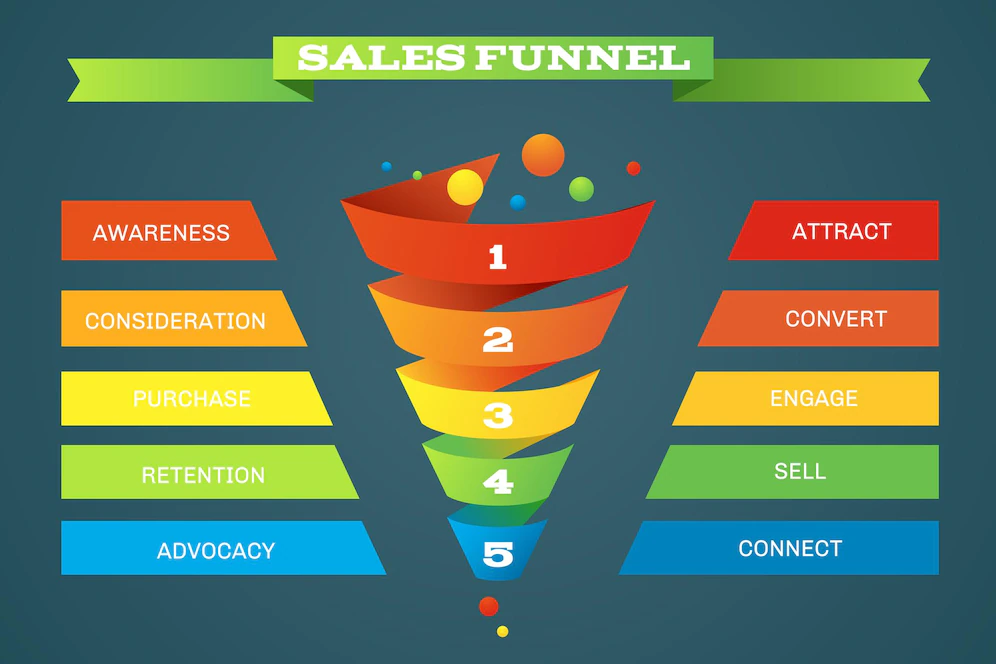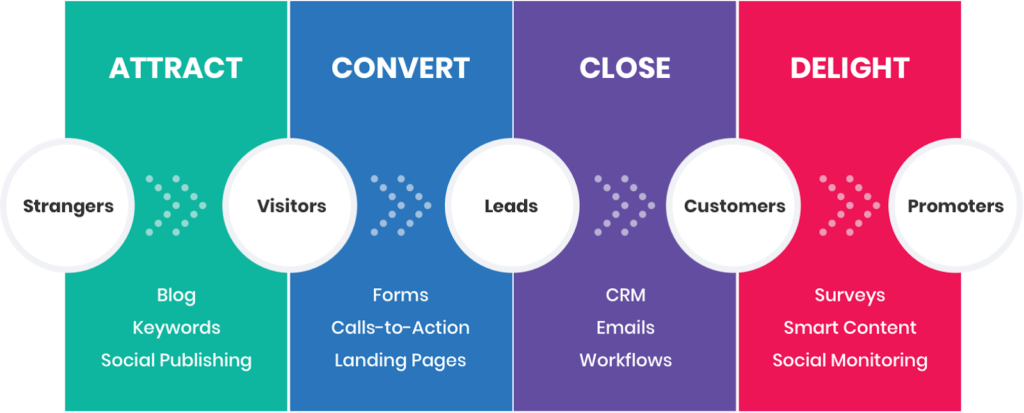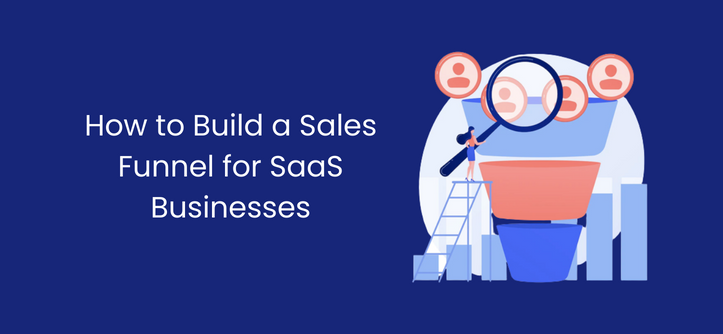Running any business is no walk in the park, even more so a SaaS business. You’re constantly looking for opportunities to increase conversions and optimize your sales process.
For this reason, a sales funnel becomes an important tool in your arsenal because it helps you understand the path your customers take from contacting your business right up to purchasing.s
By mapping out your customer’s journey, you can identify opportunities to boost conversions and optimize your sales efforts for better returns.
A sales funnel also helps you to understand which marketing channels are most effective, and which types of content and messaging are resonating with your target audience. Thus, providing insight into customer behaviour, which aids forecasting, enabling you to plan your marketing and sales strategies more effectively for your SaaS business.
However, creating an effective sales funnel can be a daunting task. We’ll be discussing the important steps to creating a sales funnel that works, while also defining customer segments, developing customer personas, creating an effective sales funnel strategy, and optimizing the funnel for maximum conversions.
What is a Sales Funnel?

A sales funnel is a visual representation of your customer’s journey from the initial awareness of your product or service to making a purchase. The different stages of the funnel represent a series of stages that your customer has to go through before a sale can be considered successful. It typically starts with awareness, then consideration, then purchase, and finally loyalty. Each step, designed with thought and intention, to move the customer closer to a purchase. A sales funnel is a visual representation of your customer’s journey, and with tools like a contact center, businesses can keep track of interactions at each stage.
The Importance of a Sales Funnel for your SaaS Business
In today’s world, a sales funnel is important because it allows your SaaS business to effectively and efficiently identify, qualify and convert leads into customers. By analyzing your marketing and sales processes, you can identify opportunities for conversions and create the strategies and tactics that are most effective at converting leads into customers.

Source: www.rakacreative.com
A sales funnel helps to maximize your return on investment in marketing and sales activities, by providing a structured approach to nurturing leads and understanding customer behavior. By tracking and analyzing each step of the funnel, your business can gain valuable insights into your target market’s behaviour, motivations, and desires and make informed decisions to drive more sales.
Steps to Building a Sales Funnel for your SaaS Business
In order to build a sales funnel that is effective, you need to ensure that you’re creating a system that generates leads and drives sales. A sales funnel system that takes prospects through a series of steps to convert them into customers, is an important addition to your business.
The steps include: creating a target audience, developing an attractive offer, driving traffic to your offer, creating an effective landing page, nurturing leads through the funnel, and measuring and optimizing your funnel. By following these steps, you can create an effective sales funnel that will help you maximize your sales results.
Define your Target Audience
The first step when building a sales funnel for your SaaS business is to define the customer segments that you plan to target. A target audience is typically defined by demographics, psychographics, geographic location, age, gender, and interests.

Ask yourself crucial questions when defining your target audience. What are your target audience’s interests, goals, and ambitions? How does your product or service fit into these goals? Does it solve their existing problems, or offer solutions that they didn’t even know existed? Where do these people live? Do they have large families or live alone? What do they spend their income on? Would they be willing to spend more money for value or are they likely to choose convenience over luxurious products?
By asking these questions, you can ensure that you’re creating a sales funnel that is tailored specifically to your target market. Once you have identified your target audience and the customer segments that they fall into, you can begin to develop customer personas for each segment. Here are some sales funnel examples to check out.
When creating customer personas, it’s important to include as much detail as possible, including demographic information, customer needs, pain points, and any other relevant information. This will help you to understand your customer base more thoroughly and create more tailored content for each customer persona.
Create an Offer
An attractive offer will provide potential customers with value, such as discounts, free trials, or bonus items, which will make them more likely to follow through with a purchase. These offers will provide an incentive for your customers to take action and make a purchase, as opposed to simply browsing the website without making a purchase.
Direct Traffic to your Offer
After creating an irresistible offer, the next step is to drive your traffic, whether by traditional or digital means to your offer. You can create content to drive awareness, nurture prospects with emails, offer discounts and promotions, and provide superb customer service. Directing traffic can manifest in different ways:
- Create a Landing Page: Explain the offer, its benefits, and how it will help your target customers. Make sure the landing page has a clear call to action, such as a button or form, to capture leads and direct them to the next step in the funnel.
- Promote the Offer: Use both organic and paid marketing methods to promote the offer, such as email marketing, social media, content marketing, and search engine optimization.
- Utilize Retargeting Ads: Retargeting ads can be used to remind potential customers of your offer and to direct them back to the landing page.
- Offer an Incentive: Offering an incentive, such as a discount or free trial, can entice potential customers to take action and move further down the sales funnel.
- Use Referrals: Ask existing customers to refer your offer to friends, family, and colleagues. This can help to increase your reach and attract more potential customers to your offer.
Optimize the Funnel for Maximum Conversions
The final step in creating a sales funnel for your SaaS business is to optimize the funnel for maximum conversions. How do you do this?
- Analyze your current funnel performance: What are your conversion rates, average order value, and customer acquisition cost?
- Identify areas of improvement: What processes, tools, or parts of your funnel can be improved on? Do you need a better CTA? A different color scheme on your landing page? Do you need to shorten your checkout process or offer additional discounts on social media?
- Test and measure: Once you’ve identified areas of improvement, test different solutions to see which works best. Use A/B testing to measure the performance of different changes to your funnel.
- Automate and personalize: Use smart automation and personalization to increase the efficiency of your funnel. Automate the customer journey, personalize emails and offers, and send targeted messages to different audiences.
- Monitor performance: Monitor the performance of your sales funnel over time. Make sure to track key metrics such as conversion rates, customer lifetime value, and average order value.
Conclusion
Building a successful sales funnel for a SaaS business is essential for achieving long-term success. By following the steps outlined in this post, you can create an effective sales funnel tailored to your target market and optimized for maximum conversions.
Defining customer segments, developing customer personas, creating an effective sales funnel strategy, and optimizing the funnel are all key steps to creating a successful sales funnel. With the right strategy in place, you can generate more leads, convert more prospects into customers, and reap the rewards of a successful SaaS business.




